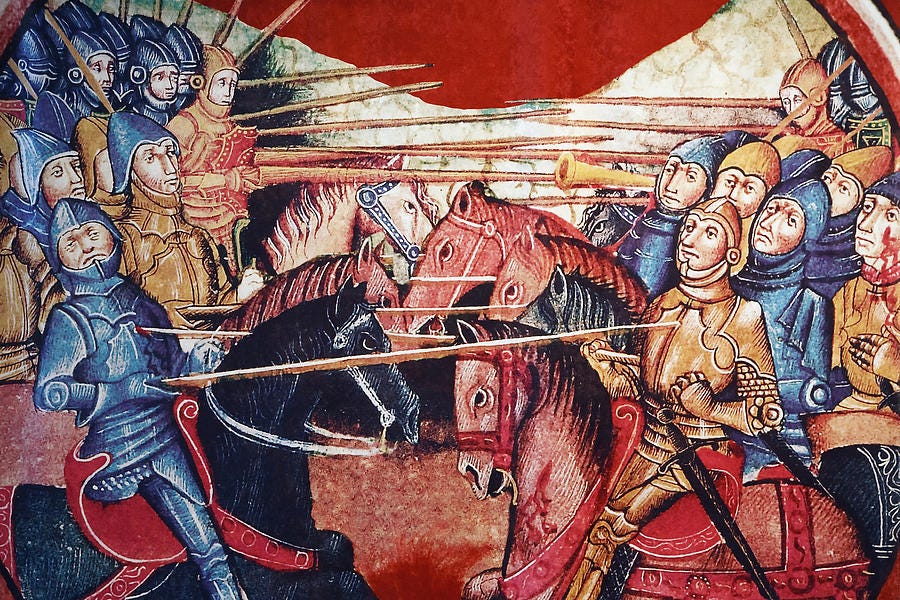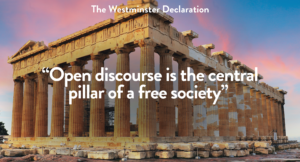A guest post by researcher Justin Santopietro
Readers of this Substack will have become familiar with the workings of the international “Censorship Industrial Complex,” particularly the roles played by the United States federal government and its NGO and academic proxies. However, a much under-appreciated and under-researched area, particularly in a constitutional federal republic like the United States, is the patchwork of pro-and anti-censorship policy-making occurring at the state level.
In the 50 US states, legislators, governors, and attorneys general are constantly at work, often outside the attention of the public and press, developing policies or launching suits that can have an equal, if not more, direct impact on the daily lives of Americans. In fact, due to the national and global dominance of US technology companies, state-level policy-making can even have global impacts. US Supreme Court Justice Louis Brandeis once said “the states are the laboratories of democracy,” as these 50 legislatures operating under their state constitutions often have more leeway than the US Congress operating under the full constraints of the US Constitution and its Bill of Rights. The strategies, ideologies, and processes of these bodies are as diverse as the nation itself, and following and making sense of all this decentralized policymaking can be an enormous challenge.
The power and size of the US federal government vis-a-vis the states has generally grown throughout the nearly 250-year republic. But when states, particularly large ones, make policies they are often, perhaps intentionally, making policy for the entire country, as businesses operating in multiple states often find it easier to comply nationally with the strictest state laws rather than maintain separate business practices in each state. This phenomenon, colloquially known as the “California effect,” is not lost on state policymakers of either party, particularly those opposite the White House, and is often implicitly acknowledged when federal courts become the chosen venue for the inevitable litigation that follows.
Several recent decisions from the Supreme Court have also had a direct impact on free expression in the US, all of which limited attempts to combat social media censorship. In Murthy v. Missouri, the Court ruled 6-3 that the plaintiffs did not have a legal right (known as “standing”) to a preliminary injunction. Siding with the Biden Administration’s argument that the plaintiffs had not shown their injuries were attributable to the government, the majority cited the lack of any “concrete link” between the speech restrictions claimed by the plaintiffs and the conduct of government officials. The other three judges issued a strong critique of the ruling.
Notably, the justices declined to opine on the merits of the First Amendment claim, merely holding that the plaintiffs had not shown they were censored because of the government. It appears that the Court was requiring a showing that the plaintiffs were censored for posts on topics which, prior to the government’s involvement, the platforms had not been censoring. Justice Samuel Alito dissented, in an opinion joined by Justices Clarence Thomas and Neil Gorsuch, suggesting that the case could be “one of the most important free speech cases to reach the Supreme Court in years.” The case will return to the lower courts to be re-evaluated for further proceedings.
Similarly, the Supreme Court sided with a consortium of technology and social media companies in Netchoice v. Paxton and Netchoice v. Moody. Netchoice brought suit against new laws in Texas and Florida that would regulate how large social media companies control content posted on their sites. The Supreme Court unanimously overturned decisions made by two Appeals courts and sent them back to the lower courts for another look. All nine judges agreed that the Appeals courts had not conducted a proper analysis of the facial First Amendment challenges, concluding that at least some content-moderation decisions made by the social media platforms are themselves protected by the First Amendment.
Since these high-profile decisions from the Supreme Court did not result in final, decisive rulings, all three of these cases are likely to continue forward in some form.
The constant churn of legislation and legal actions across the country is often fad-driven, as hot-button issues fade in and out of the zeitgeist. These patterns are particularly noticeable in the digital policy space, as dozens of states are now pursuing similar bills relating to social media regulation, the use of artificial intelligence and “deepfakes,” particularly in political campaigns, children’s internet use, and limitation of so-called ‘hate speech’ both on and offline.
Another critical if immeasurable factor is the tenacity and determination of state-level policymakers, particularly attorneys general. Since the contentious 2020 election, we’ve seen a growing coalition of aggressive Republican AGs sending coalition letters and bringing dozens of suits against the Biden Administration and its proxies, many of which relate in varying degrees to digital freedom of speech, the line between coercion and censorship, “de-banking,” and the role of content moderation by large social media platforms.
Over the past few months, we’ve seen quite clearly that pro- and anti-censorship efforts do not always lie cleanly along partisan lines, particularly as policymakers react to global events. It is not uncommon to see members from both parties swapping sides on free speech principles as the underlying content changes. Since covid and the 2020 election, it was largely Republicans that were leading the charge against censorship efforts from the federal government, the medical establishment, social media companies, and college administrators. But this trend has taken a notable turn since October 7th of last year.
Accordingly, liber-net (the digital civil liberties initiative associated with this Substack) has launched a new research project to bring clarity to this dizzying array of legal and legislative activity, with a particular focus on how state-level policymaking impacts digital free speech and expression. The 1925 Supreme Court decision in Gitlow v. New York incorporated and applied the First Amendment’s free speech clause to all state governments equally to the federal government. Nonetheless, the wide spectrum of powers granted by the unique constitutions of each state to their respective governments creates an abundance of options for state officials to pursue, whether they are aiming to expand or limit free speech. But perhaps most importantly, this complex governing ecosystem can make it challenging to understand the free speech threats and opportunities emanating from so many separate State initiatives.
By mapping the current and emerging state of play we aim to assist journalists and other stakeholders to better understand and report threats to free speech and enable free speech proponents to better target their advocacy efforts.
In September we’ll release the full report of our findings and will keep you updated here on some key discoveries we make along the way. Stay tuned.



